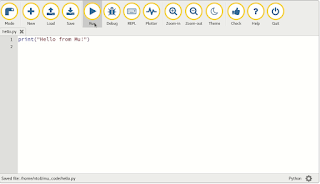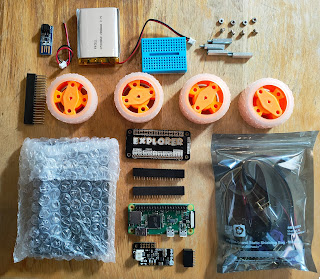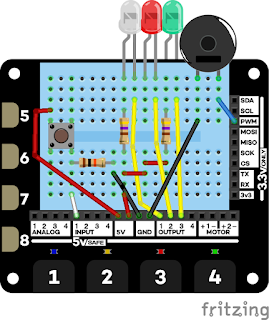Mu, Edublocks and the Kitronik Inventor's kit

A friend of mine recently asked me about Python programming on the micro:bit. I told him that I wrote a free workbook about that a while back. (If you'd like to get a copy you can sign up here ). It's based around the excellent mu editor . Code with Mu Mu is a no-frills editor that you can use to develop and run programs on the micro:bit , Adafruit CircuitPython boards , the Raspberry Pi and other Python environments Mu has just enough features to be usable without being daunting. I love it. But some young students find text-based programming a bit scary. How can they get started? Code with Edublocks Some younger programmers are happier with block-based (visual) programming. For them, Edublocks is a great solution. Edublocks is block based, runs in your browser, and looks like the popular Scratch environment, but it's Python-oriented . Here's the Edublocks version of the code for the first experiment for Kitronik's excellent micro:bit Inventor's Kit .



